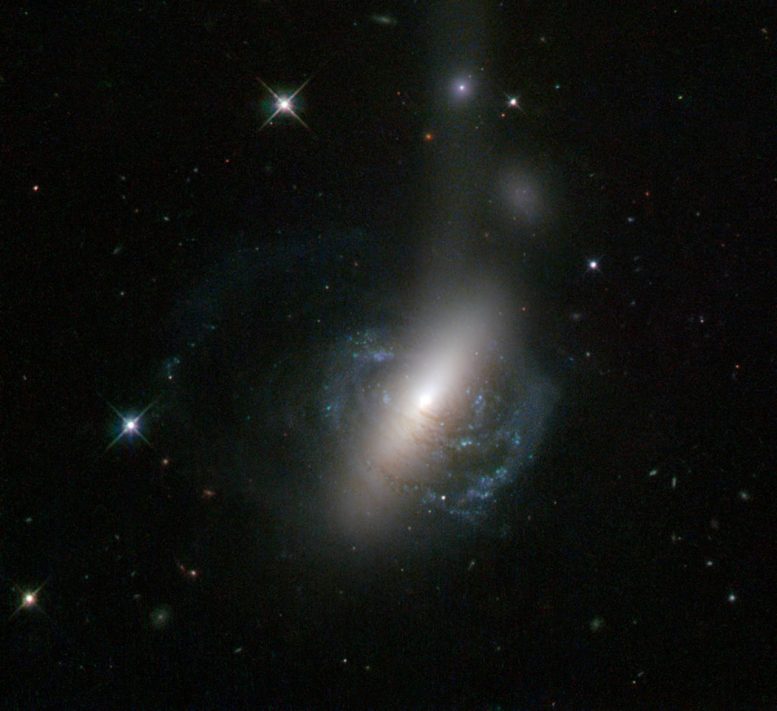
Hubble Space Telescope image of an ongoing cosmic collision between two galaxies. Credit: ESA/Hubble & NASA, Acknowledgment: Luca Limatola
In this new image, NASA’s Hubble Space Telescope views an ongoing cosmic collision between two galaxies.
This new image from the NASA/ESA Hubble Space Telescope captures an ongoing cosmic collision between two galaxies — a spiral galaxy is in the process of colliding with a lenticular galaxy. The collision looks almost as if it is popping out of the screen in 3-D, with parts of the spiral arms clearly embracing the lenticular galaxy’s bulge.
The image also reveals further evidence of the collision. There is a bright stream of stars coming out from the merging galaxies, extending out toward the top of the image. The bright spot in the middle of the plume, known as ESO 576-69, is what makes this image unique. This spot is believed to be the nucleus of the former spiral galaxy, which was ejected from the system during the collision and is now being shredded by tidal forces to produce the visible stellar stream.









How can one be sure that these Galaxies are not simply passing each other in the line of sight of the telescope without actually passing through each other at all and thus not actually causing any stellar collisions. . .which in any case would be a very rare event considering the great distances between these stars. . .If such galaxies would actually pass through each other then stellar collision might still not occur at all.
These supposed interpretations just get more an more bizarre. Using the falsified foundation of the concordance model doesn’t help. The morphology comes within the constraints of a single galaxy with remains of the accretion disc around the lenticular core. The outflows top and bottom will then become ‘quasar’ jets. This is a ‘recycling’ process more consistent with the WMAP and Planck anisotropies. We seem to have something wrong with our scientific method, falsifying assumptions but then finding all still using them to confuse even further!